The Real-Life Case Behind the Atlanta Child Murders Featured In Mindhunter
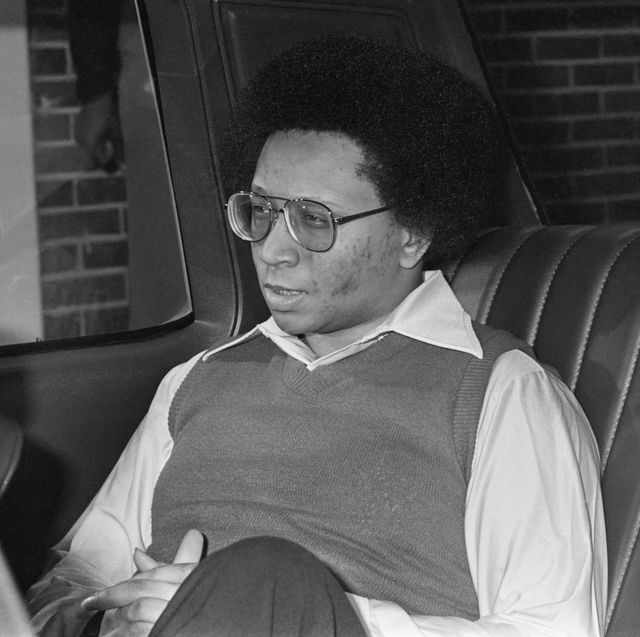
Forty years ago in Atlanta, Georgia, a serial killer abducted and brutally murdered at least 28 black children between the ages of 7 and 17, in the span of three years.
From 1979 until 1981 their bodies were dumped all over the city: In rivers, vacant lots, dumpsters, behind houses, and under bridges. Parents lived in constant fear that their kid could be next.
The FBI dubbed the case “ATKID” aka the Atlanta Child Murders. They suspected a man named Wayne Williams might be responsible and, in 1982, Williams was convicted of killing two adults. At the time police believed he was also responsible for many of the child murders, although he maintains his innocence to this day, and the case remains unsolved.
Season 2 of Netflix's original crime series Mindhunter , out August 16, also focuses on the Atlanta child Murders and the FBI's quest to profile the unidentified killer. Here's everything you need to know about the case.

When did children begin to disappear?
The first murder associated with the Atlanta Child Murders case occurred in July 1979. Here's what former FBI agent Susan E. Lloyd wrote in a case study :
Fourteen-year-old Edward Hope Smith had been missing for one week when his body was found on July 28, 1979 in a vacant lot in southeast Atlanta. He had been shot. On that same day, the body of a 13-year-old, Alfred James Evans, was found near Smith’s body. He had last been seen three days before, and had been strangled.
Milton Harvey, age fourteen, was last seen riding a yellow bicycle on September 4, 1979. His body was found on November 16, 1979. An autopsy report concluded his was an undetermined cause of death (UCD). The next victim was Yusef Ali Bell, age nine, who was last seen on October 21, 1979. His body was found later that same day in a vacant school; the cause of death was strangulation.
In 1980, 12 more children were murdered, and the following year, seven more bodies were discovered. The children were mostly killed via strangulation and asphyxiation, although several were bludgeoned to death and one child was shot to death.

How did the FBI connect Williams to the murders?
On November 6, 1980, the FBI opened a preliminary investigation into the Atlanta Child Murder case. According to Lloyd's case study, "FBI profiler Roy Hazelwood from the Behavioral Science Unit at Quantico flew to Atlanta in mid-1980 to consult on the murders to date. He was followed some months later by FBI profiler John Douglas who arrived in Atlanta in early January 1981 to develop a formal profile of the person or persons responsible for the child murders."
Douglas believed the serial killer was likely African American, "under the presumption that a white person could not easily travel in black neighborhoods without creating a great deal of suspicion. This element was part of the profile despite the fact that a serial killer who was African American would be unusual," according to Lloyd.
Douglas also believed the killer was of average or above average intelligence who presented himself as an authority figure. The killer probably had frequent changes in employment or was self-employed and able to follow media coverage of the murders closely.
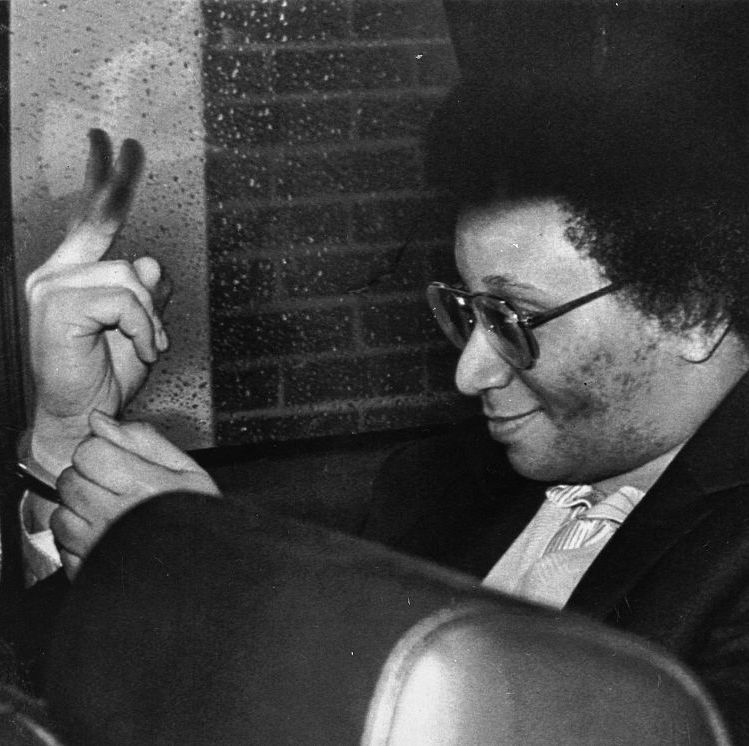
On May 22, 1981, Williams was stopped by police on a bridge after they heard a loud splash in the river below. Williams denied dropping anything in the water. Two days later, the body of a 27-year-old man was found in the river and Williams was arrested.
Among the items seized from his home after his arrest were "a king-sized bedspread from Williams’ bed, containing light violet acetate fibers consistent with those found on eighteen of the victims; white dog hairs with black tips from the family dog similar to those hairs found on nine victims; and coarse yellowish-green carpet fibers from the wall-to-wall carpeting which had the same characteristics as those found on thirteen of the victims," according to Lloyd's case study.
In 1982, Williams was found guilty of the murders of 27-year-old Nathaniel Cater and 21-year-old Jimmy Ray Payne. He was given two consecutive life sentences, although authorities believe he is responsible for at least 23 of the other killings.
Where does the investigation stand now?
In March 2019, the cases were reopened and evidence gathered by the Atlanta Police Department will be retested using new DNA technology. In a news conference, Atlanta Mayor Keisha Lance Bottoms said, "It may be there is nothing left to be tested. But I do think history will judge us by our actions and we will be able to say we tried."
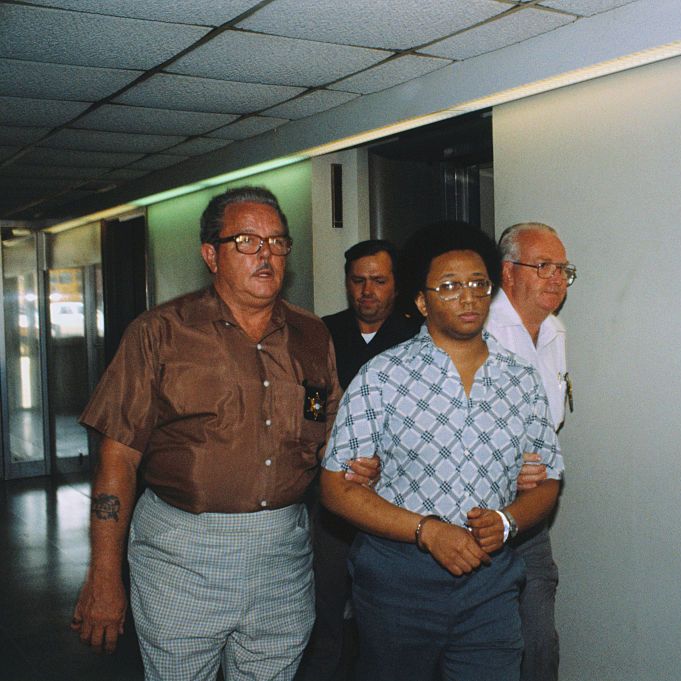
Is Williams still in jail?
According to The New York Times , he resides in a state prison "about three hours south of Atlanta and has steadfastly denied that he is a killer."

Do the Atlanta Child Murders play a big role in Mindhunter season 2?
According to executive producer David Fincher, yes.
“You could probably do three seasons on the Atlanta Child Murders,” he said on KCRW’s podcast “The Treatment. " “It’s a huge and sweeping and tragic story. We couldn’t do it justice in the background of our nine hours.”
Fincher also revealed that season 2 will begin at the end of the years long investigation, when the FBI is called in to Georgia. “[The FBI] are the last guys in, they’re trying to help out something that has its own momentum and politics,” he said. “It’s a divided battlefield. They’re coming in to throw this federal umbrella over everything to make everyone feel okay about sharing information.”

Hulu New Releases

Shop Selena Gomez’s Style From OMitB
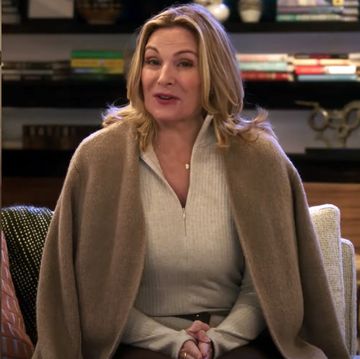
'How I Met Your Father' Has an Official Trailer
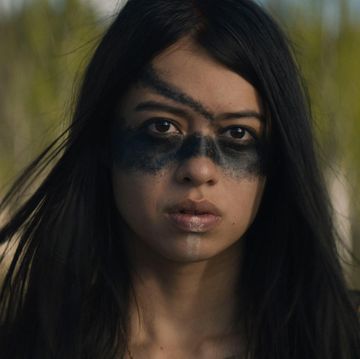
The Best Horror Movies to Stream on Hulu
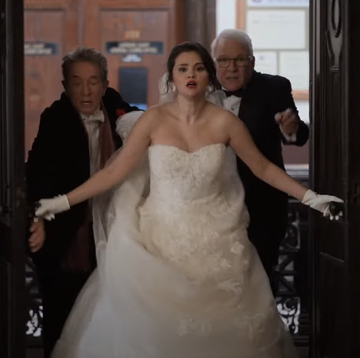
Watch the New 'Only Murders' Season 3 Trailer
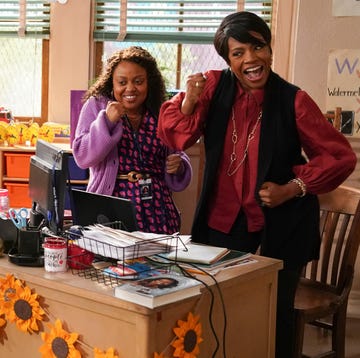
Need a New Binge? Check out the Best Shows on Hulu

What to Know About Handmaid's Tale Season 6

'Tell Me Lies' Author & Showrunner in Conversation
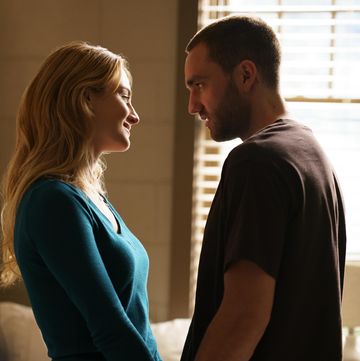
How Does Hulu's Tell Me Lies Differ from the Book?
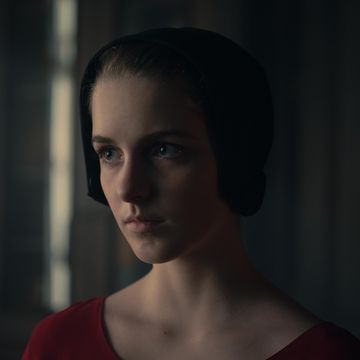
Mckenna Grace on ‘Handmaid’s Tale’ Season 5
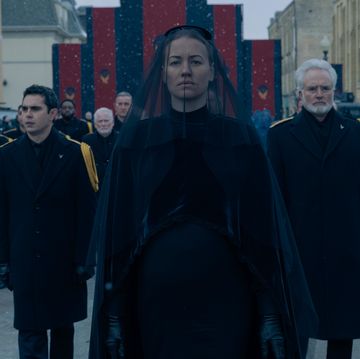
When to Catch New Episodes of 'Handmaid's Tale'
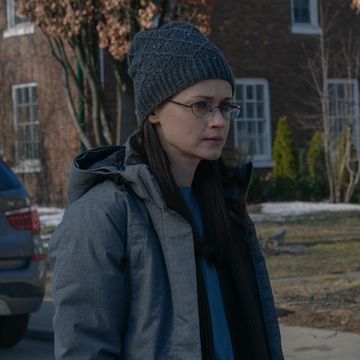
Why Is Emily Not in 'Handmaid's Tale' Season 5?
- Share full article

Who Killed Atlanta’s Children?
Forty years ago, a serial killer terrorized the city. Families have been searching for answers ever since.
Color-coded case files from 1981 in the evidence room where detectives are reviewing the Atlanta child murders. Credit... Audra Melton for The New York Times
Supported by
By Audra D. S. Burch
- April 30, 2019
[For more coverage of race, sign up here to have our Race/Related newsletter delivered weekly to your inbox.]
ATLANTA — On the fifth floor of the Atlanta Police Department headquarters, more than a dozen investigative files of dead children are neatly spread across three tables. A handwritten list, scribbled in red ink, provides the names of some of the children who were killed. The years of each killing — 1979, 1980 and 1981 — are taped on three walls, along with grainy photos of the children, almost all of them smiling.
Old homicide logs are stacked on another table. Inside the pages, among the details is the story of the Atlanta child murders, one of the most vexing cases in the city’s history.
Forty years ago, Atlanta was terrorized by a serial killer who snatched and killed two dozen children, aged 7 to 17. They vanished with spine-chilling regularity, only to have their bodies discovered weeks or months later. In rivers. Under a bridge. Behind dumpsters.
The menacing drumbeat of child abductions, mostly of young African-American boys, shook a city that was emerging at the time as a progressive black mecca. Gripped by fear, anxiety and helplessness, parents refused to let their children play outside. Some took their children out of school. Psychics arrived to help. The city imposed a curfew.
In 1982, Wayne Williams was convicted of killing two adults. Police suspected that he was also responsible for most of the child murders, as well as the killings of four young adults. Even though prosecutors introduced evidence to potentially link him to some of the other murders, Mr. Williams, who is serving two life sentences, was never tried or convicted of killing any of the children — no one was.
But after Mr. Williams was sent to prison, 22 of the unsolved child murder cases were closed, raising an enduring question: Who killed Atlanta’s children?
Some parents argue that the city, eager to quiet the blistering headlines, yielded to political pressure and closed the books after Mr. Williams’s trial as a matter of convenience. The abrupt, unsatisfying end led to questions, doubts, anger and rumors. Through it all, the parents, gutted and grief stricken, have been searching for answers.

Mayor Keisha Lance Bottoms was an elementary school student when the killing spree began, and she vividly remembers the relentless warnings against going outside alone. Last month, she ordered the cold cases reopened and the evidence retested using the most recent DNA technology . Ms. Bottoms said she hopes the new investigation will “help bring some peace to the families who for so long have felt like they were forgotten.”
Wayne Williams is now 60 years old. He sits in a state prison about three hours south of Atlanta and has steadfastly denied that he is a killer. But Erika Shields , Atlanta’s police chief, said the new investigation is not about him.
“This is about being able to look these families in the eye,” she said, “and say we did everything we could possibly do to bring closure to your case.”
‘My God. My God.’
In the summer of 1979, the remains of two teenage boys were found in the woods in southwest Atlanta. They had been missing for several days. One reportedly vanished from a skating rink. The other while returning from a movie.
“Nobody had any idea of what this was going to morph into that Saturday afternoon, that these were the first two victims of a serial killer who would murder over a span of two years,” said Danny Agan, a retired Atlanta homicide detective who investigated three of the cases on the list.
Over the next 22 months, 22 more children — including two girls — were kidnapped and strangled, shot, stabbed or bludgeoned, along with four young adults. One boy, Darron Glass, last seen in September 1980 when he was 10, is still missing.
“Every day, every night, it seemed like they were finding bodies. The city was turned upside down. There was this big dark cloud over us,” said Sheila Baltazar, 61, whose stepson, Patrick Baltazar, 12, was killed in 1981. “And we were just trying to hold on to our babies.”
Police scrambled to find any connection among the bodies that were being discovered almost routinely. At the height of the killing, more than 100 agents were assigned to the investigation as part of a law enforcement task force.
Nineteen children were already missing or killed by the time that Curtis Walker, a seventh grader, walked into his home one afternoon in the winter of 1981. His mother, Catherine Leach, was cooking when she turned to Curtis and forbade him from going outside. “Stay inside,” she said. “They’re snatching children.”
Curtis, 13, left anyway, headed to make extra money by carrying groceries for seniors. He never returned home. For two weeks, Ms. Leach, now 70, waited for news about Curtis, the second oldest of her four boys, the one who had promised to score big in Hollywood, maybe as an illustrator because he drew animals so well.
Then came a call from a neighbor: Turn on the news.
“My God. My God,” Ms. Leach cried, reliving that moment 38 years ago. “I looked at him being pulled out the water on television. I just knew that was him.”
Though her son’s killing was one of 10 considered a “pattern case” that authorities directly connected to Mr. Williams, Ms. Leach does not believe he is the killer. She is not alone. Several parents or relatives have said they believe the Ku Klux Klan was responsible.
“We want to know who killed our children,” Ms. Leach said, adding that it felt like her son and the other children had been forgotten. “That’s the answer we didn’t get.”
It was a stakeout in May 1981, near the Chattahoochee River, that led the police to Mr. Williams. Investigators eventually linked hairs and carpet fibers on the bodies of some of the victims to those in his house and car, they said.
Mr. Agan, who worked on the police force for 29 years, retiring as a homicide commander, said he understands the temptation to believe that Mr. Williams is innocent, particularly among African-Americans, in part because of a historic distrust of the police.
But for him, he said, the facts are clear. It was Mr. Williams whom the police spotted crossing a bridge in his car after an officer heard a splash , he said. Days later, a body was discovered in the river not far from where another had already been found.
“A lot of folks want to hinge his guilt on the carpet fiber alone. There was other evidence, more fibers and dog hairs brought into court, along with witness testimony. And there is the inescapable fact that Wayne Williams was on that bridge, and two bodies washed up days later,” Mr. Agan said. “Wayne Williams is a serial killer, a predator, and he did the bulk of these murders.”
In 2010, DNA testing was performed on human hairs found on the body of Patrick Baltazar, the 16th victim. The results did not exclude Mr. Williams as the source of the hairs, and the investigation didn’t produce any new results.
A Pair of Gold Trunks and $2
Anthony Terrell, 48, has spent the last four decades replaying the day his big brother Earl went missing after leaving a community pool. He still searches his mind for the slightest detail that might lead to answers.
Mr. Terrell tearfully shared his story on a rainy Saturday at the Ellenwood, Ga., cemetery where his brother is buried in the Garden of Faith.
On a July afternoon in 1980, Mr. Terrell’s relatives invited the boys to go swimming, but he stayed behind to care for his two younger brothers. He gave Earl his gold trunks and $2 to enter the pool.
A short time later, Earl, 10, got into trouble at the pool and was asked to leave. Everyone assumed he went home, but by the time night fell, the family was racing through the neighborhood, searching for him.
Months later, Earl’s skeletal remains were discovered in a wooded area. Mr. Terrell helped his mother identify his brother by the gold trunks. “I just keep thinking, what if I had went swimming instead,” he said.
Mr. Terrell described his brother as his protector. “He taught me how to do everything. We walked to school together. He wanted to be a firefighter, and every time he saw a fire truck, he would run outside,” he said.
“He was a fighter, which is why I don’t understand how anyone could have snatched him.”
‘We Opened It Up.’
Ms. Bottoms, who was elected mayor in 2017, was 9 years old when the killings started. She remembers her grandmother and aunt begging her mother to send her to Chicago. And she remembers waiting at the school bus stop one morning when a car slowly cruised by — and suddenly book bags were flying and scattered on the street.
“It was chaos, and we all just took off running, and kids were crying and everybody was hysterical,” she recalled. “It was like there was a boogeyman out there, and he was snatching black children.”
The memory stayed with Ms. Bottoms. So when she recently learned about the case of two Alabama teenagers whose killer was arrested 20 years after the crime through the use of DNA, she instantly thought of the Atlanta child murders.
Last month, she announced that investigators would take a fresh look, and the city would begin exploring plans for a memorial to the children. For years, a group of parents, led by Ms. Leach, had asked the city to find a permanent way to remember the children.
A hotline was established, and within days, 50 tips came in; 16 were sent to investigators. Chief Shields said the new investigation began with three questions: Where is all the evidence? How many cases would be reviewed? And from over what time period?
“We opened it up,” she said. Investigators established a 15-year window ending in 1985, in which the team would review crimes that might be linked to the Atlanta child murders but weren’t identified as such at the time.
During that time period, 157 children were killed, including the 24 children already considered part of the case. Many others were victims of domestic violence. The remaining cases will be reviewed, and more could be added to the new investigation.
Atlanta police, with assistance from other agencies, will review the cases to determine the condition of the evidence, whether it can be tested or retested and run through DNA databases. Early on, the team determined that some of the cases were not thoroughly investigated, and the 22 cases closed after Mr. Williams’s trial should have remained active.
“I am not judging the officers. I am saying with Wayne Williams being convicted, it allowed all these boxes to be sealed, even if there was nothing in them that tied the victim to Wayne Williams,” Ms. Shields said. “I think the investigators were under such political pressure that they were not allowed to do their jobs to the extent they could.”
Ms. Shields said she expects to learn something new about the 40-year-old case, but she is unsure how compelling those details will be. “We will see different patterns, but I don’t know that it will lead to an arrest,” she said. “We are going make some headway, but I am not sure how much.”
Alain Delaqueriere contributed research.
Advertisement
- Newsletters
- Account Activating this button will toggle the display of additional content Account Sign out
HBO’s Latest True-Crime Documentary Is Driven More by Twists Than the Truth
Atlanta’s missing and murdered is better than atlanta monster , but that’s not saying much..
If there were ever a real-life cold case that cried out for a brilliant, obsessed investigator like Val McDermid’s Tony Hill or Idris Elba’s Luther, it’s the Atlanta child murders of 1979 to 1981. An estimated 29 killings of black children, adolescents, and young men riveted the nation and almost tore apart the booming “City Too Busy to Hate,” even as Atlanta’s black community celebrated the election of the city’s first black mayor. Then, in 1981, Atlanta police arrested 23-year-old Wayne Williams, a freelance news photographer and self-styled music promoter, for the murder of Nathaniel Cater, 27. He was convicted the following year, and with that, authorities closed the remaining 28 cases.
Hardly anyone was satisfied with this resolution, as a new five-part HBO documentary series, Atlanta’s Missing and Murdered: The Lost Children , testifies. (The first two episodes are now available, and the remaining three will air on consecutive Sundays.) But there are a half-dozen different and incompatible ways of quarreling with it. Atlanta’s Missing and Murdered does justice to a couple of the criticisms, and it certainly provides a more cogent picture of the city, the time, and the crimes than the haphazard and gullible Atlanta Monster podcast did two years ago. But the HBO series also succumbs to the imperatives of a plot-twist narrative. It seems driven more by the need to entertain than a desire to get at the truth.
Atlanta ’ s Missing and Murdered does succeed at portraying an important part of the story: how the city’s black community experienced that terrifying two-year period, and the role that grassroots organizers played in forcing Atlanta’s recently integrated police force to take the murders more seriously. Victims’ relatives, journalists, people who were children at the time, and other Atlantans speak to the dread that settled over black neighborhoods, and to their indignation that officials couldn’t seem to stop the killing or identify its perpetrator. Camille Bell’s 9-year-old son, Yusuf, disappeared while running an errand for a neighbor and his body was found three weeks later in an abandoned school; she became a spokesperson for the victims’ mothers and the leader of the Committee to Stop Children’s Murders. The gravitational force of Bell’s eloquence and dignity in archival footage tends to bend any depiction of the Atlanta murders in the direction of her beliefs, and Bell believed that Williams is innocent.
She’s not alone. One of the most unsettling scenes in Atlanta ’ s Missing and Murdered comes in the second episode, when Williams, via speakerphone, is invited to address a forum organized by a local radio station at a church to discuss the case, an event attended by victims’ friends and relatives, former search party volunteers, and neighbors. If you believe (as I do) that Williams committed at least some of the murders, this is grotesque. The producers of the Atlanta Monster podcast allowed the garrulous Williams to run away with several episodes of their show, but that mistake served the purpose of making his narcissism and dishonesty impossible to ignore.
Nevertheless, the evidence against Williams is circumstantial. Most of it consists of fibers found on the bodies of many (but not all) of the victims attributed to the Atlanta child murderer, particularly an unusual green carpet fiber combined with dog hairs and traces of a bedspread found in the house where Williams lived with his parents. The fourth episode of Atlanta ’ s Missing and Murdered reconstructs the prosecution’s case, and it comes across as damning. Then the fifth episode proceeds to demolish it—at least rhetorically. The testimony of eyewitnesses who claimed to have seen Williams with some of the victims is cast into doubt. A 2015 exposé of widespread flaws in the FBI’s use of microscopic hair analysis is presented as if it also calls into question the fiber analysis that was a much larger part of the prosecution’s evidence. In the mid-2000s, Williams’ defense team learned that the Georgia Bureau of Investigation was secretly surveilling a family allegedly associated with the Ku Klux Klan and had recorded one of its members, Charles T. Sanders, praising the killings . A 1991 appeal based on the argument that this investigation should have been revealed to Williams’ defense team, exhaustively documented in Atlanta ’ s Missing and Murdered , failed. The series does not mention the results of independent DNA tests in 2007 and 2010 , both supporting Williams’ conviction, although not conclusively so.
FBI profiler John Douglas—the basis for the Holden Ford character in the Netflix series Mindhunter , which takes its title from Douglas’ memoir— participated in the hunt for the Atlanta child murder , producing a profile that matched Wayne Williams to an uncanny degree. Yet even Douglas has stated that he does not believe Williams committed all 29 crimes. The HBO series presents one of the strongest alternative scenarios—that a local man with a record of sexual assaults raped and killed one victim, Clifford Jones—a story dismissed by the police because the eyewitness who claimed to have observed the crime was intellectually disabled. It also covers the persistent rumors of a house where pedophiles paid local boys, including some of the victims, for sexual favors and photographs. This line of investigation does not appear to have ever been sufficiently pursued.
Despite its dramatic structure, anyone familiar with the Atlanta child murders won’t find anything new in Atlanta ’ s Missing and Murdered, although it does make for a much better introduction to the case than Atlanta Monster . The city’s current mayor, Keisha Lance Bottoms, interviewed for the series, reopened the investigation more than a year ago . Police chief Erika Shields said that the department still has boxes of evidence that has never been tested for DNA, but if that evidence has revealed anything of interest, it has yet to be announced. A frustrating sense of stasis prevails. Will there never be a breakthrough? Monica Kaufman-Pearson, a beloved longtime Atlanta news anchor interviewed for both the podcast and Atlanta ’ s Missing and Murdered, may be right when she tells the camera: “This is one of those mysteries that will remain a mystery because we blew it from the beginning. There were all these questions. And we never got good answers.”
Things you buy through our links may earn Vox Media a commission.
The Real FBI Agent Behind Mindhunter on What Actually Happened in Atlanta
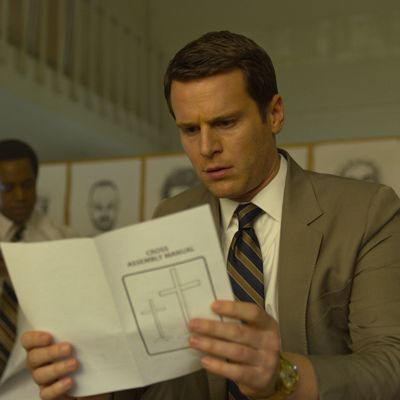
Criminal profiler John Douglas isn’t exactly a household name, but his work has influenced a vast amount of pop culture from Silence of the Lambs to Netflix’s Mindhunter . As the real-life inspiration behind Mindhunter’ s main character, Holden Ford (played by Jonathan Groff), Douglas was a founder of the FBI’s Behavioral Science Unit and one of the first agents to interview serial killers in an attempt to better understand future predators.
Though retired from the FBI since 1996, Douglas continues to work on cases and has written several books about criminal profiling — his latest, co-written by Mark Olshaker, is The Killer Across the Table — and he lends a knowledgeable hand to TV shows and movies that aren’t, as he puts it, solely about “blood and gore.” (He’s even developing a podcast based on his original Mindhunter book.) Now, the Netflix drama inspired by one of those books has revisited one of the more controversial chapters of his career: the Atlanta child murders . Though a man named Wayne Williams was convicted in 1982 for two murders tied to the case, Douglas doubts that Williams is responsible for many of the other 26 killings — despite matching a profile that Douglas himself made when he began investigating the case in the ’80s — and Atlanta police officially reopened the case last March.
Vulture sat down with Douglas to chat about the fact and fiction of Mindhunter , the Atlanta child killings, the most notable interviews of his career, and why he wants Netflix to keep renewing the show until Ford finally catches the BTK killer .
This season, I felt like I saw more of you in Bill Tench than Holden Ford. What did you think? You’re right! You know when Holden is getting chewed out at the retirement party? If it’s just me, this person that’s superior to me in rank, and no one’s around, I’m not going to take it. You’re going to call me a twerp? No, you’re not going to get away with that. I never challenged a person I was interviewing, either. I would never call Manson “you little shit” or whatever the hell term was used. No, I stroked his ego. I let him feel like he was in control of the interview.
What was it like to speak to Charles Manson ? We actually went back a couple of times to interview Manson. He did take the sunglasses. He wanted to show everyone that he ripped us off because everyone would know that he was talking to the FBI. [ Mimicking back and forth with Manson ] “I want those glasses.” “These are Ray-Ban glasses. These are expensive!” “I’ve got to take them back, man. I’ve got to show everybody I ripped you off.” So he took the glasses and he never gave them back! Unlike in the show.
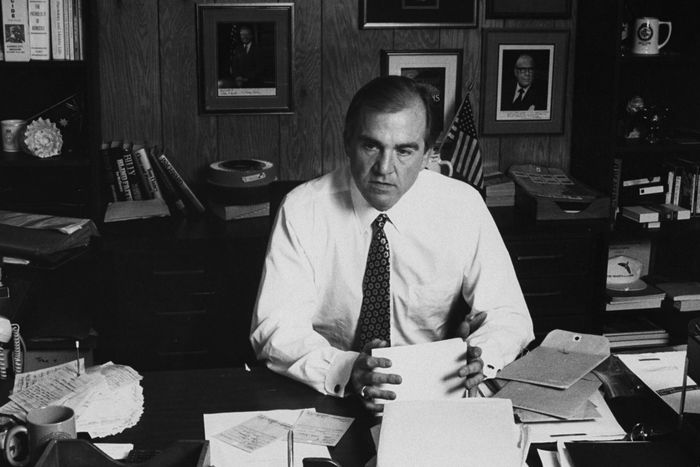
A lot of characters on the show are based on real people, but they’re pretty fictionalized. What did you think about the story line with Tench’s son? Should we be worried about him? Well, it did not happen to the real guy Tench was representing, [Robert] Ressler, but that case does exist . It was up in San Francisco. A woman in a park with a 20-month-old toddler. Two brothers, 10 years old and 7 years old, snatch the child. They kill the child in the basement with a brick and then they attach a cross to the child, believing that the child’s going to be resurrected. So that did happen.
The Atlanta child-murder case was one of the Behavior Science Unit’s first huge investigations, and it plays a big role in Mindhunter . What can you tell me about the real case? Throughout the whole trial, all the months leading up to the apprehension, I would come and go because I had other work. By 1981, not only did I have the Atlanta child killings, but I had the Tylenol murders. We had the Unabomber case up in Chicago. Then we had other cases, Buffalo’s .22-caliber killer.
I did the written analysis of the case and people didn’t like it. The FBI had me sit down and do an interview with People magazine. In the interview, I say the suspect is going to be black. I’m back on the case down there, I walk into a task force and pretty much the entire force was African-American. Even the agent in charge of the FBI office, John Glover, was the first African-American agent in charge of an FBI office. He wasn’t introduced at all in the show. And so, I wasn’t warmly welcomed.
They were afraid that I was going to create a race war. I remember walking down to one of the crime scenes and a detective says, “You’re Douglas?” And I say, “Yeah.” And he said, “I saw your profile. It’s a bunch of shit, man.” I said, “Fuck you, man. I didn’t ask to be here. I just want to go back to Quantico. I got a lot of cases waiting for me back there.”
To me, the turning point in the case came when a guy called up the police saying that he was the killer. He’s using the N-word, giving directions on where we can find another body. I hear the tape and I said, “That’s not the killer. But we got to catch him because if we don’t, he’s going to be bothering the hell out of this investigation.” What do we do? We’re gonna show how stupid we really are. Lo and behold, the guy calls in, “You dumb-asses, I told you to search this side of the street. You searched the other!” We traced the call and caught him. What’s the significance? Well, that ended up in the newspapers in Atlanta. And who read it? The killer. Within a day or so, we end up with a body on Sigman Road. Now, for certain, we know they follow the press.
The crosses they used for the memorial were a real suggestion I had, too. It was true that the Bureau was arguing among themselves who’s going to make the crosses. They went back and forth. It was never done. That’s why, after a while, I would do things without asking for permission. Just asking for forgiveness if I screwed up.
The scene where they build the crosses never happened? No, never got to them! I have several things that I wanted to do. The big Sammy Davis Jr. and Frank Sinatra concert, I knew the unknown subject was going to be in that audience. So I said, “Let’s look for somebody who has some type of security background who has a vehicle. We can screen them right away. We can get rid of all the females. We’ll get rid of people who don’t have cars. We can eliminate through race.” Again, it was a great idea. It wasn’t used. We know later on that Williams was at that concert.
Oh my God. Yeah, they wonder why I drink. [ Laughs .]
Do you think the right man was caught? The Atlanta police reopened the case earlier this year. I never thought that Wayne Williams did all of those cases. There are other cases that should not be on the list. Two of the girls, Angela Lanier and Latonya Wilson, and some other ones that did not fit. Roy Hazelwood [another FBI profiler] and I had about ten of them that we thought were behaviorally linked. Now they are looking at it again. It’s not that [Williams] didn’t do any [of the murders]. But it’s the question, did he do all 28 of them?
If investigators contacted you, would you help out on the reopened case? I definitely would go back.
Mindhunter is also slowly unraveling the BTK case . How frustrating was the actual investigation? You started getting information on him in the ’80s, right? He wasn’t caught until 2005. Dennis Rader, he wasn’t any genius. He was just very lucky. In 1984, we said he was a police-buff type, attending college and probably in criminal justice. He was. He was a pseudo–enforcement officer. You see that and you think, Gee, had they just maybe gone over there … It was really the stupidity of Rader that got him caught, unfortunately. It wasn’t because of super-duper police work. He wasn’t smart like Ed Kemper. He was more on the lines of David Berkowitz, the same kind of average IQ.
I hope the show sticks with the BTK case because I want to see Ford and Tench catch him. They’ll have to speed up on it because he gets caught after I retired. But they got some other great cases . From Ted Bundy, John Gacy, Robert Hansen, the Alaskan serial killer who hunted women down like wild animals after setting them loose up in the mountains. The Green River murder case that nearly did me in. Also, I interviewed assassins. Besides Squeaky Fromme and Arthur Bremer, we did Sirhan Sirhan, Sarah Jane Moore who shot at Ford along with Squeaky Fromme. So you can even get into some of the assassination types. It’s just how long they want to take it. It can go a long, long time, really.
You’ve talked to so many infamous criminals over the years. Was there ever a killer you were excited — for lack of a better word — to interview? I don’t know if “excited” is the right word, but I was fascinated by the worst ones. Gary Heidnik in Philadelphia, who inspired Buffalo Bill in Silence of the Lambs — I did an analysis because I assisted the prosecution. We knew he was going to claim that he was insane. He did do some insane acts — like imprison and torture half a dozen women by keeping them in a pit with water in it, by putting an electric current on the shackles around their wrists — but he was not insane. When you look at the crime scene, the victims were kept in the cellar, with various concrete blocks around the window so no one could hear any screaming. His crimes were certainly insane, but he knew right from wrong.
Another one was Lawrence Bittaker and Roy Norris out in California. My God, these guys raped and killed a half-dozen women, young teenagers, playing audiotape as they tortured them. I have the tapes of these victims who are begging for their lives. I made Scott Glenn of Silence of the Lambs , who portrayed me, listen to them when he came to my office. He got all emotional and said, “John, I was against the death penalty, but I didn’t know there are people like that.”
Let’s end on a lighter question. In Mindhunter this season, Holden says that he likes New Wave music. Are you actually a New Wave fan? No, I like soul music. Right now in my car, Sirius, I got the soul channel. But not the spiritual soul. I used to watch Soul Train after school. I’d be down in the basement with a black-and-white TV, learning the latest moves.
This interview has been edited and condensed for clarity .
- vulture section lede
- john e douglas
- mindhunter season 2
- serial killers
Most Viewed Stories
- Cinematrix No. 29: April 4, 2024
- Reacher ’s Alan Ritchson Calls Out Sexual Abuse in the Modeling Industry
- Our Sweetheart of the Rodeo
- How Netflix’s 3 Body Problem Loses Its Own Plot
- Shōgun Recap: Family Matters
- Vanderpump Rules Recap: A Woman Scorned
- Cassie’s Lawsuit Against Diddy, Explained
Editor’s Picks

Most Popular
What is your email.
This email will be used to sign into all New York sites. By submitting your email, you agree to our Terms and Privacy Policy and to receive email correspondence from us.
Sign In To Continue Reading
Create your free account.
Password must be at least 8 characters and contain:
- Lower case letters (a-z)
- Upper case letters (A-Z)
- Numbers (0-9)
- Special Characters (!@#$%^&*)
As part of your account, you’ll receive occasional updates and offers from New York , which you can opt out of anytime.
- Newsletters
- Help Center
- Metro Atlanta
- Georgia News
- Legislature
- National & World News
- AJC Peachtree Road Race
- 2024 Election
- Trump Georgia case
Mayor: Investigators have reviewed DNA in the Atlanta Child Murders case
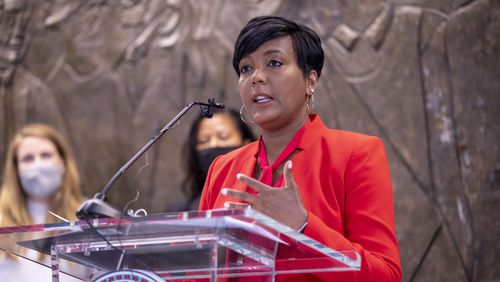
Credit: Alyssa Pointer
Atlanta Mayor Keisha Lance Bottoms says investigators have recently “methodically reviewed” an estimated 40% of evidence related to the deaths of more than 20 young Black children, teens and adults who have been missing for decades.
Bottoms shared the update on the Atlanta Child Murders during a Friday morning press conference about new public safety plans recommended to her by her recently formed anti-violence advisory council.
The mayor said investigators processed that evidence on June 21, but authorities do not to plan to publicly name the victims that they we were able to extract DNA from for testing because “we want to be mindful of the integrity of the investigation.”
Bottoms in March 2019 announced that police and prosecutors would potentially reopen the child cases using modern technology to test old case evidence. Forty years ago, freelance television cameraman and music promoter Wayne Williams was taken into custody and charged with murdering 27-year-old Nathaniel Cater.
In 1982, Williams was convicted of killing two adults, but police also linked him to the deaths of over 20 Atlanta children and teens from 1979-81.
“This was a very, very painful time in our city’s history,” Bottoms said Friday.
“Part of my asking that this be reopened was in light of where we are with DNA testing some 40 years later...to make sure that we have examined everything possible to make sure that the person or people responsible are being held accountable.”
Bottoms said a private lab is analyzing the deteriorated DNA and fiber evidence in all 30 of the cases. She also said investigators have extended the timeline from 1970 to 1985 to see if there are any additional children or victims that may have been overlooked.
“I believe there are two cases...that we have been able to send off DNA for additional analysis,” Bottoms said.
“We certainly hope to have that information back over the next few months. Hopefully, before I leave office I hope that we’re able to get it back, but if not, I trust that whomever the next mayor will keep this as a priority,” she said. “And it’s truly my hope that with the analysis of this additional DNA that we can have some additional answers.
Portraits of the missing children were recently installed as an art memorial at Hartsfield-Jackson International Airport. The city is also creating an “ eternal flame ” and memorial wall that will list the names of those murdered or left missing at City Hall.
About the Author

Wilborn P. Nobles III covers Atlanta City Hall for The Atlanta Journal-Constitution. He began covering DeKalb County Schools for The AJC in November 2020. He previously covered Baltimore County for The Baltimore Sun and education for the Times-Picayune in New Orleans. He interned at the Washington Post. He graduated from Louisiana State University.

Credit: HYOSUB SHIN / AJC

Credit: TNS

Credit: Miguel Martinez
Credit: contr

- Arts & Events
- Great Reads
- Atlanta 500
- Block by Block: Stories from the streets that connect us
- Women Making a Mark
- Pride Guide 2022
- Restaurant Reviews
- 75 Best Restaurants in Atlanta
- Best Barbecue
- 50 Best Tacos
- 123 Things to Eat on Buford Highway
- 50 Best Bars
- Best Breakfast
- The TOUR Championship Cocktail Contest
- Atlanta Magazine’s HOME Digital Editions
- Artists & Galleries
- Design Advice
- Design News
- Real Estate
- Neighborhoods
- Real Estate All-Stars
- Sponsored: Preferred HOME Partner
- Kitchens for a Cause
- Georgia Design Awards 2023
- School Guide
- Health & Wellness
- Top Doctors
- Top Dentists
- Sponsored: Physician & Dentist Profiles
- Buckhead Guidebook
- Southbound Magazine
- Southbound Digital Editions
- Southbound Newsletter
- 50 Best Things to Do in Georgia
- Hidden Georgia
- North Georgia Mountains
- Great Georgia Hikes
- Jekyll Island
- Georgia Travel Guide
- Gilmer: Ellijay Visitors Guide 2022
- Alabama Vacation Guide 2023
- Readers’ Choice
- Subscription Center
- Purchase Single Issues
- Newsletters
- Digital Editions
- Custom Media
- Give Atlanta
- Internships
- Where to Find
- Georgia Design Awards 2024
- GrillFest 2024
- Whiskey Festival 2023
- Upcoming Events
- Atlanta Magazine Whiskey Festival 2022
- 2020 Atlanta Symphony Orchestra Designer Showhouse
- Atlanta Baby and Beyond
- Atlanta Magazine Whiskey Festival 2019
- DINES: A Taste of the City’s Best Restaurants
- 2019 Modern Style Showhome
- Best Burger Battle
- Pinewood Forest Idea Home
- 2018 Modern Style Showhouses
- Event Photos
- Issue Archive
- GaBiz Magazine
- Vote for the Best of Atlanta Reader’s Choice 2023

In a new podcast, the Up and Vanished creators and HowStuffWorks tackle the Atlanta Child Murders

Photograph courtesy of Atlanta Monster
Between 1979 and 1981, nearly 30 black children and young adults disappeared from the streets of Atlanta while walking to the convenience store or on the way to play with friends. Days or weeks later, the bodies of the victims—most of whom were male and poor—were found dumped in the woods or the Chattahoochee River. The kidnappings and killings created a panic unlike anything experienced in the city’s modern history, spurring parents to make their children play inside and birthing playground whispers of a real-life boogeyman on the loose.
Known as the Atlanta Child Murders , the crimes attracted national attention, and a two-year manhunt by local, state, and federal law enforcement ended in the middle of 1981 with the arrest of Wayne Williams. On February 27, 1982, the 23-year-old aspiring musical talent scout was convicted for the murders of two young men, Nathaniel Cater and Jimmy Ray Payne, and sentenced to two consecutive life sentences. Williams, who has maintained his innocence, was never tried for the killings of any of the children. However, Atlanta Police declared 23 of the 29 cases solved after he was found guilty.
The story spanned race and class, and lives on today, discovered for the first time by younger generations even as it has faded from some people’s memories. Five cases are considered open by DeKalb County Police. Conspiracy theories about the case are still discussed. And many of the victims’ families live without closure. Today, the cases get another review. Local filmmaker Payne Lindsey and producer Donald Albright, the duo who created the breakout podcast Up and Vanished , which investigated the disappearance of a former beauty queen in rural Georgia, have teamed up with Atlanta-based website and podcast company HowStuffWorks to present Atlanta Monste r, a 10-episode podcast series about the Atlanta Child Murders. We recently spoke with Lindsay, Albright, and Jason Hoch of HowStuffWorks about the series, the first episode of which premieres today. You can listen to the podcast here .
Payne, you mention in the first episode that although you grew up in metro Atlanta, you had never heard of this case, and that Donald mentioned it to you when you were looking for a follow-up to Up and Vanished . Donald, how did you hear about this case?
Donald: I grew up in California, and I was two when the first disappearances began. I don’t remember [an exact] moment when the case was introduced to me. But I remember the aftermath. In the black community, it was talked about at some point if you were [a kid], at family gatherings and among friends. I don’t remember being scared, but it was a conversation piece. “This could happen.” Even hearing the commercials in episode one. I didn’t realize [those were from this case].
As I got older, it was one of those things that was in the background of the African American community. One reason being that there were so many victims. But the main reason was because it was a black serial killer. There was a myth in the black community that there was no such thing as a black serial killer. There were always theories about who really did it. It was widely covered throughout the past 30 years. The alternate theory was the KKK was involved.
Payne, what made you say, “Yes, let’s tell that story?” One of the reasons you picked the Tara Grinstead case [for Up and Vanished ] was because it was unsolved. Williams was convicted of killing just two of the victims on that list. But, in the eyes of police, he’s responsible for the rest. How did that change the reporting and production process?
Payne: Usually I’m not attracted to the kinds of stories where you already know the conclusion or think you do. [With this story,] a guy is in jail. But Jason and Donald had mentioned it to me separately, and after doing some research, I realized there was a bigger story. There’s a guy in jail, but the story doesn’t end there. It really never ended. The magnitude and racial issues are still relevant in 2018. All those things together made this seem like a really big story and a challenge. I wanted to challenge myself with something massive, and this seemed to have all the right pieces. Two Atlanta podcast companies tell Atlanta’s darkest secret. There’s so much about this case that people don’t know. Or they forgot and remember differently. We want to start from the beginning and tell you the real deal, the real facts, and then let you decide for yourself.
How was the partnership with HowStuffWorks formed?
Jason: I was a huge fan of what Payne had done with Up and Vanished . [HowStuffWorks is] in a growth mode right now and trying to expand [into new areas]. We wanted to get into journalism we hadn’t done before, and true crime was one of those topics. The biggest challenge was, “How can we open the doors up and let Payne tell the story he wants to in a way that’s accessible for a [broad] audience, not just for a local audience?”
I grew up in Wisconsin and I was nine or 10 years old [during the case]. I got pulled into the house early, and I was nowhere near where any of it was happening. That “It’s 10-o-clock, do you know where your children are?” mentality—it was everywhere. We all remember growing up and being able to run around and play outside freely. You could be gone for two or three hours as a kid. But today, kids play video games. It was a different time. And I think that does resonate nationally.
Donald: The reason I brought [the Atlanta Child Murders] up to Payne was because my fiancee is from New London, Connecticut. She also remembers growing up hearing about the case. It speaks to people who were young when this was happening, from Georgia to Wisconsin to Connecticut. It was a national story then, and I think we’re making sure it’s a national story again. Millennials haven’t heard about this. And if it was such a big story [that Gen X-ers all remember], why haven’t Millennials heard about it? Is it the racial or social status of the victims the reason why this wasn’t as big as the Zodiac killer or other [well-known] serial killers?
What were the big challenges you faced in producing the podcast?
Donald: It’s been an ongoing challenge dealing with how much time has gone by [since the murders], and finding people to talk at all was one of the biggest challenges early on. Some have have died, others are in prison. One of the beauties [of the podcast] is that we were able to tap into a news archive that’s never really been heard before. So the podcast is going to be full of authentic audio that takes you back to the time period.
Jason: The University of Georgia has a wonderful archive where they’ve taken a significant amount of old video from WSB-TV, from the early days and up to the trial, and digitized it. So we asked the library staff for everything on the case. [When the murders first began], people didn’t really know what was happening. But then reporters began talking to families. Psychics were trying to locate the killers. You’re going to hear things that I don’t think you’d expect.
As one person mentioned in the first episode, these killings took place long before we had social media, or even a 24-hour news cycle. How was the community’s understanding of these crimes shaped?
Payne: The media shaped everything, in my opinion. It was such a big national story. Two years went by and they still didn’t know who did it. There was pressure for them to arrest someone and make it all go away. You can see that in the news coverage. And it kind of perpetuated the paranoia in the city. They had to do something about it because of the media coverage. I think in some ways that affected the investigation and how things transpired. There wasn’t 24-hour news yet, but with newer cameras and color TV, news was getting bigger and bigger.
The case didn’t just frighten children and families, but it rattled Atlanta’s power structure. In addition to fearing for the kids, they feared for the city’s reputation. Did you find anyone who just didn’t want to talk about it?
Payne: Several, mostly people who were part of the government who had to stand up in front of people and talk about it. I’m sure they look back and wish they had done things differently. A lot of things were more socially acceptable back then, even how you talk about people. There were a lot of people who didn’t want to talk because they have closed this chapter of their lives. But we wanted to leave open the door for people to change their mind [ Editor’s note: production on the podcast series is ongoing ]. In Up and Vanished , we got the result we did because that door was wide open. You could come to us with new information and change the outcome of the next episode. We’ve got the same thing happening here. This involves generations of people. We want to leave that door open for people to tell the story their way. We’re telling it through everyone else’s voices. We’re trying to make this the very last chapter. Even though a lot of people have closed this door, most haven’t. If you have family members of victims saying this isn’t over yet, if there are any other truths that need to be unearthed, let’s unearth them.
Wayne Williams is adamant that he’s innocent. Will we hear from him in the series?
Payne : We hope to. To tell this story you have to reach out to every person you can. We’re trying to close the door on this case forever, and to make that possible, we have to hear from everyone.
I think there’s a lot of information [in this case] that can make you feel a lot of different ways. We’ll present them and you’ll go through the roller coaster I went through. All the information combined together is what has never been done, and we’re doing that so you can make your own assessment. There have been times when I think [Williams is] innocent or times I think he’s not. Or there are times I think he committed some of the murders or none of them. You follow the facts. And if you do that, I think we’ll get to a satisfying conclusion.
Jason: Because it’s been 40 years or so, people think they remember [the case] a certain way. But because of how [the podcast] is rolled out, it’ll come back to them more quickly. Talking to some of the people we interviewed, I’m interested in how it resonates with a national audience.
People were literally in the woods with family members looking for kids. Psychics. That was part of the culture of America in the late 1970s and early 1980s. But you don’t hear about that anymore. I can’t believe that a police force [today] would be out in the woods with psychics. But it happened on the national news. I’ve seen tens of clips on this, and I’m still in disbelief that [it actually happened].
Payne: [There were a lot of] different leads before they found Wayne Williams on the bridge that night. I think a lot of people hear “Atlanta Child Murders” and think “Wayne Williams.” But what about before Wayne Williams? We’re exploring that.
Donald: The weird thing when looking back at some of that news footage was seeing how this case was covered and what made the news. You don’t remember how prevalent the coverage was about the [sex trafficking ring, one of several conspiracies floated at the time]. It was part of the nightly news, but that wasn’t part of the facts that were given to me [as a child]. You’re going to question the progress we’ve made in the last 30 to 40 years if only because you remember how underdeveloped we were in the 1980s, from investigations to news coverage to race relations. There are some things, like when they polled the black and white communities and asked if police treated each community differently. Those [themes] are the same today.
Jason: Wayne Williams was convicted of two murders, but the list of those killed was close to 30 African American kids. Of all the theories of what happened, a lot have been based on the lack of closure for these families who didn’t have a trial and couldn’t close the book.
RELATED ARTICLES MORE FROM AUTHOR

Letters written to Mayor Jackson during Atlanta Child Murders illustrate the tragedy’s impact

A new podcast explains Georgia’s current political climate by those who know it best: actual Georgians

How Donald Albright became Atlanta’s podcast kingmaker
Newsletters.

Most recent

A couple of serial entrepreneurs just bought up a bunch of historic South Downtown. Now what?


A North Carolina naturalist’s tips for spotting springtime blooms

The verdict on 3 new Atlanta restaurants: The Bronx Bagel Buggy, El Santo Gallo, and Owens and Hull BBQ
Great reads.

Ronald Acuña Jr. takes flight

The Dining Diva: Christiane Lauterbach dishes on her 40 years as Atlanta magazine’s dining critic

The ancestors of Nettie Washington Douglass still have stories to teach us. She just hopes we are ready to listen.
- Business Forum
- Privacy and Cookies Policy
- Terms of Use
- General Contest Rules
Watch CBS News
"Atlanta child murders" case: New push to review evidence
Updated on: March 21, 2019 / 4:39 PM EDT / CBS News
Atlanta's mayor and chief of police are leading a push to re-examine evidence from a string of murders from 1979 to 1981 that terrorized the city's black community.
Wayne Williams was given two life sentences in 1982 for convictions in the deaths of two adults, thought to be among 29 black children and young adults killed. After Williams' conviction, police closed 22 other cases, blaming them on Williams without formally charging him.
Mayor Keisha Lance Bottoms and Police Chief Erika Shields announced Thursday that the Georgia Bureau of Investigation will review evidence in the so-called "Atlanta Child Murders."
According to the Atlanta Journal Constitution , Bottoms said she started thinking about re-examining the evidence after speaking with Catherine Leach-Bell, whose 13-year-old son's murder is one of the cases that remain open.
Bottoms cited the vast advancements in DNA technology since Williams' conviction in the decision to review the case. "It may be there is nothing left to be tested," Bottoms said, "But I do think history will judge us by our actions and we will be able to say we tried."
Bottoms reportedly said the new examination will assure the families of the victims, that "we have done all that we can do to make sure their memories are not forgotten and, in the truest sense of the word, to let the world know that black lives do matter."
The Atlanta Police Department, the Fulton County District Attorney's Office and the Georgia Bureau of Investigation will all reportedly work to gather old evidence in the case to be re-examined.
The update comes as a new documentary detailing the disturbing case, produced by Will Packer, is set to air on Investigation Discovery.
More from CBS News

Soccer star Luke Fleurs shot dead at gas station in South Africa
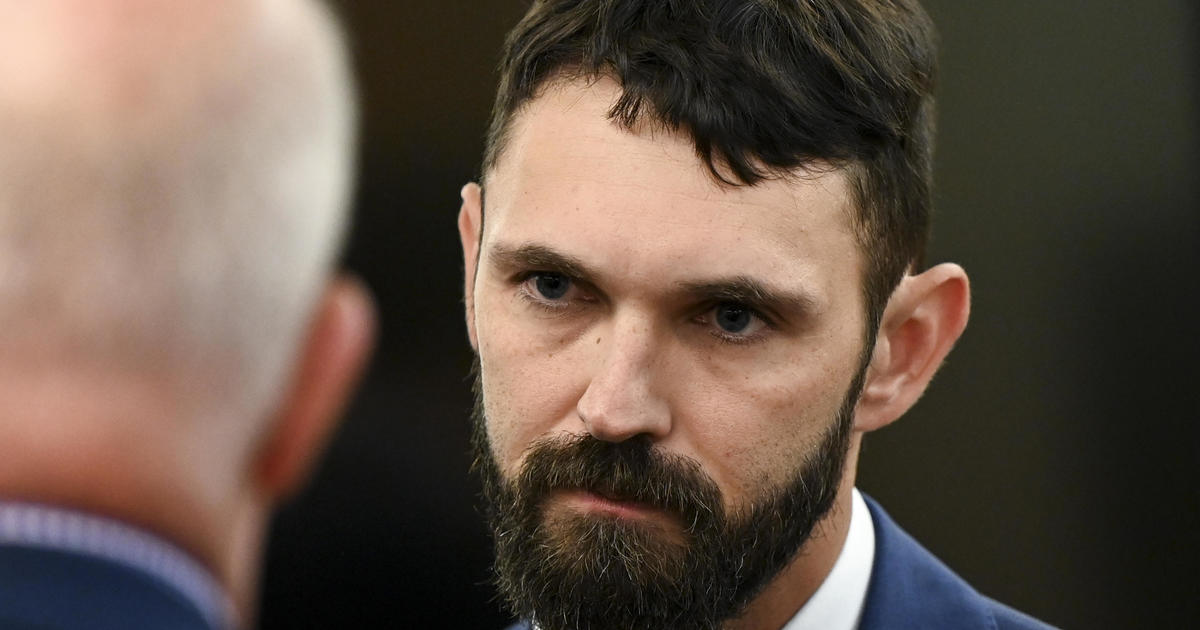
Cop acquitted in man's death resigns from new job days after hiring

How brown rats crawled off ships and conquered U.S. cities

Oklahoma executes man convicted of killing 2 people in 2002
- Today's news
- Reviews and deals
- Climate change
- 2024 election
- Fall allergies
- Health news
- Mental health
- Sexual health
- Family health
- So mini ways
- Unapologetically
- Buying guides
Entertainment
- How to Watch
- My watchlist
- Stock market
- Biden economy
- Personal finance
- Stocks: most active
- Stocks: gainers
- Stocks: losers
- Trending tickers
- World indices
- US Treasury bonds
- Top mutual funds
- Highest open interest
- Highest implied volatility
- Currency converter
- Basic materials
- Communication services
- Consumer cyclical
- Consumer defensive
- Financial services
- Industrials
- Real estate
- Mutual funds
- Credit cards
- Credit card rates
- Balance transfer credit cards
- Business credit cards
- Cash back credit cards
- Rewards credit cards
- Travel credit cards
- Checking accounts
- Online checking accounts
- High-yield savings accounts
- Money market accounts
- Personal loans
- Student loans
- Car insurance
- Home buying
- Options pit
- Investment ideas
- Research reports
- Fantasy football
- Pro Pick 'Em
- College Pick 'Em
- Fantasy baseball
- Fantasy hockey
- Fantasy basketball
- Download the app
- Daily fantasy
- Scores and schedules
- GameChannel
- World Baseball Classic
- Premier League
- CONCACAF League
- Champions League
- Motorsports
- Horse racing
- Newsletters
New on Yahoo
- Privacy Dashboard
Atlanta Child Murders: How Was Wayne Williams Caught?
Disclaimer: This article contains mentions of murder and assault. Reader discretion is advised.
The infamous case of the Atlanta Child Murders came to a close in 1982 when Wayne Williams was linked to 22 of the total 29 murders of children, teenagers, and young adults who were killed in Atlanta between 1979 and 1981. Although Williams was not convicted of all the murders, the police announced that he was the serial killer who executed the Atlanta Child Murders and the investigation was concluded.
The series of murders began on July 21, 1979, when a 14-year-old boy went missing. This was followed by the disappearance of another teenager, days later. Over the 22 months that followed, a reported serial killer haunted the streets of Atlanta. 29 young African Americans were murdered. FBI records state that the bureau did not get involved with the case until June 22, 1980, when a 7-year-old girl was reported missing.
The Atlanta Police Department and the Georgia Bureau of Investigation joined hands with the FBI’s Behavioral Science Unit to construct the profile of the potential serial killer. By November, the FBI allotted officers to work on the case. The murders continued until Wayne Williams was caught in May 1981. The murders were seemingly connected. All victims were young African-American males who went missing during the day. Their bodies were found in isolated areas and the murders didn’t suggest obvious motives.
By April 1981, the alleged serial killer began dumping the bodies of his victims in the Chattahoochee River. Officers watched the bridges on the river for hours before there was a splash in the river at around 2:52 am on May 22, 1981, when a car sped across the bridge. The driver was stopped and was identified as 23-year-old African-American freelance photographer, Wayne Williams.
How many of the murders was Wayne Williams convicted of?
When he was confronted, authorities did not have enough cause to take Wayne Williams into custody. Two days later, the body of Nathaniel Cater was found in the river and Williams was interrogated. Williams’ alibi was poor. He was previously arrested for impersonating a police officer. These became the central factors leading to his arrest.
After his arrest in June 1981, Williams was tried and convicted of the murders of two of the victims through hair and fiber analysis and witness testimony. The method employed to match Williams’ hair with that found along with the victims’ bodies, was not based on DNA analysis but rather, just a matter of judgment, CNN reported. The murders came to a halt after Wayne Williams was caught.
Wayne Williams was only convicted of the murders of Nathaniel Carter and Jimmy Payne, both adults, unlike a majority of the remaining victims who were either children or teenagers. He was, however, linked to 20 more murders. He was sentenced to two consecutive life sentences and is currently housed at the Telfair State Prison. Williams has maintained that he is innocent and hasn’t admitted to any of the crimes.
In December 2022, 11 Alive reported that the families of at least four victims of the Atlanta Murders demanded that the DNA tests that matched Williams to the victims. In 2019, authorities promised that the city was going to reexamine the murders to provide closure to the victims’ families. DNA testing wasn’t a verified procedure when Williams was convicted. This led to a debate about whether Williams was behind the murders.
Atlanta’s Missing and Murdered: The Lost Children is an HBO docuseries that explores the serial killings in Atlanta. It examines the evidence that came to light in recent years, revealing newer leads to the decades-old case.
The post Atlanta Child Murders: How Was Wayne Williams Caught? appeared first on ComingSoon.net - Movie Trailers, TV & Streaming News, and More .
Recommended Stories
Andrew siciliano, face of 'red zone channel,' and others out at nfl network, per report.
NFL Network is laying off four of its most popular and talented on-air personalities.
Rashee Rice didn't learn from the past, maybe other NFL players will learn from Rice
Rashee Rice should have taken a lesson from recent history.
NFL mock draft: Patriots trade out of No. 3 but still get their QB, and what do Bills do after Stefon Diggs trade?
As we turn toward the draft, here's Charles McDonald and Nate Tice's latest lively mock.
What the total solar eclipse could mean for your zodiac sign: An astrologer breaks it down
An astrologist weighs in on the 2024 solar eclipse.
Rashee Rice apologizes for 'my part' in crash while injured couple reportedly lawyer up
Rice reportedly owned the Corvette and leased the Lamborghini involved in the crash.
Vontae Davis, former NFL star, found dead in Miami home at age 35
Davis published a children's book about his life in 2019
USWNT captain Lindsey Horan and Alex Morgan issue statement after Korbin Albert apologizes for anti-LGBTQ content
Morgan alluded to some "hard conversations" with Albert over the past week.
A's reach deal to play in Sacramento while waiting for Las Vegas stadium
The A's will head to Las Vegas by way of Sacramento.
WrestleMania 40: Predictions for every match on Nights 1 and 2
WWE's biggest event of the year, WrestleMania 40, takes place this weekend at Lincoln Financial Field in Philadelphia. The two-night extravaganza features 13 matches, with all seven of WWE's major championships on the line. Here's how we predict the event will unfold.
Mock Draft Monday with Field Yates: You will be shocked how early Bo Nix goes
'Mock Draft Monday' rolls on ESPN's Field Yates joining Matt Harmon to break down his latest mock draft. Harmon has Yates break down his mock draft methodology and what goes into his decision making when placing certain prospects on certain teams.

IMAGES
VIDEO
COMMENTS
When the first murder associated with the Atlanta Child Murders case occurred in July 1979, it made little impact on the news cycle of the bustling city known as the Hub of the South. By the time the body of the last victim was found in late May 1981, news about the case dominated not only local headlines but international headlines as well.
The actual facts of the infamous Atlanta child murders, including all the major details that Mindhunter didn't cover in its second season. Plus, why Atlanta police decided to reopen the case in ...
It's free! Forty years ago in Atlanta, Georgia, a serial killer abducted and brutally murdered at least 28 black children between the ages of 7 and 17, in the span of three years. From 1979 until ...
The community dubbed the killing spree the Atlanta Child Murders. In 1981, a man named Wayne Williams was arrested for the murder of two young men in Atlanta. But many soon believed that his trail of death may have been far more gruesome and that he was the man behind the Atlanta Child Murders. Bettmann/Contributor/Getty Images Wayne Williams ...
The Atlanta child murders were a quintessential part of John Douglas' rise as a superstar in the crime prevention community, and it was only natural that season 2 of Mindhunter would choose to emphasize the case so much. Nevertheless, the real-life case was even more complicated than in the series and even more terrifying.
One boy, Darron Glass, last seen in September 1980 when he was 10, is still missing. "Every day, every night, it seemed like they were finding bodies. The city was turned upside down. There was ...
If there were ever a real-life cold case that cried out for a brilliant, obsessed investigator like Val McDermid's Tony Hill or Idris Elba's Luther, it's the Atlanta child murders of 1979 to ...
Larry Howard, who helped solve Atlanta Child Murders, dies at 91. Larry Howard worked for many years in the state crime lab, rising to direct it as he gathered evidence and testified in trials ...
A woman in a park with a 20-month-old toddler. Two brothers, 10 years old and 7 years old, snatch the child. They kill the child in the basement with a brick and then they attach a cross to the ...
Feb. 10-12, 1985: "The Atlanta Child Murders, " a five-hour CBS miniseries starring Jason Robards and Rip Torn as defender and prosecutor, makes a case that Williams was railroaded. Calvin Levels ...
Between 1979 and 1981, approximately 29 African-American children, teens, and young adults—mostly boys—were kidnapped and murdered. A majority of the killings shared common details. The FBI joined the multi-agency investigation in 1980. In our files, the major case is called ATKID, short for the Atlanta Child Murders. The investigation was closed following the conviction of Wayne Bertram ...
The Atlanta murders of 1979-1981, sometimes called the Atlanta child murders, are a series of murders committed in Atlanta, Georgia, between July 1979 and May 1981.Over the two-year period, at least 28 children, adolescents, and adults were killed. Wayne Williams, an Atlanta native who was 23 years old at the time of the last murder, was arrested, tried, and convicted of two of the adult ...
Explore Wayne Williams' 1981 arrest allayed crime fears, ended Atlanta Child Murders. Bottoms said a private lab is analyzing the deteriorated DNA and fiber evidence in all 30 of the cases. She ...
Investigators in Atlanta were able to extract DNA from two child murder cases for additional analysis as part of the city's probe into the dozens of decades-old unsolved killings, Mayor Keisha ...
From 1979 to 1981, the Atlanta Child Murders plagued Georgia and the country. Mindhunter season 2 explores the case that was recently reopened in real life. Search
Known as the Atlanta Child Murders, the crimes attracted national attention, and a two-year manhunt by local, state, and federal law enforcement ended in the middle of 1981 with the arrest of ...
Updated on: March 21, 2019 / 4:39 PM EDT / CBS News. Atlanta's mayor and chief of police are leading a push to re-examine evidence from a string of murders from 1979 to 1981 that terrorized the ...
Updated:9:17 PM EDT October 17, 2022. ATLANTA — It's been a year and a half since the City of Atlanta revealed it was retesting DNA evidence in the Atlanta Child Murders case. So far, it hasn't ...
presented in a clear and understandable way by the prosecutor. Study with Quizlet and memorize flashcards containing terms like What was the cause of death for each of the 28 young black male victims in the Atlanta Child murder case?, What type of microscopic evidence was found in the Atlanta Child murder case?, Modus Operandi (MO) and more.
The Atlanta Child Murders, 21 children were murdered allegedly by one or more serial killers in the Atlanta area. Wayne Williams was convicted of these crimes but the pressures to solve the Atlanta Child Murders was so great that the fiber evidence that was used to convict Wayne Williams is subject to great controversy. Some believe it was the Ku Klux Klan behind the serial murder case known ...
Disclaimer: This article contains mentions of murder and assault. Reader discretion is advised. The infamous case of the Atlanta Child Murders came to a close in 1982 when Wayne Williams was ...
Study with Quizlet and memorize flashcards containing terms like setting, victims, where were bodies found and more. ... The Atlanta Child Murders. 13 terms. Mia_Roces. Preview. Atlanta Child Murders Case Study. 11 terms. tangent1924. Preview. key command words. 22 terms. Natalie_Pizarro5. Preview. CRJ 211 Exam 2 Review. 41 terms. Hannah_Mardock.